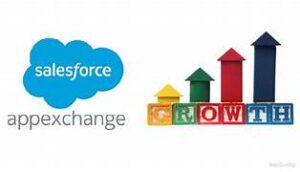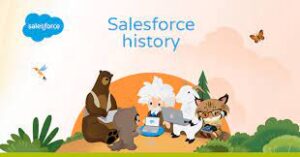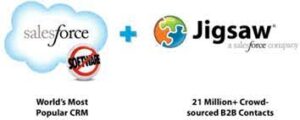Salesforce is a powerful CRM platform, but simply implementing it doesn’t guarantee success. To maximize ROI, businesses need continuous optimization, expert guidance, and proactive maintenance—something an in-house team may struggle to provide alone. Discover the key signs your business needs a Salesforce support and maintenance partner.
Many companies invest in Salesforce expecting high returns but end up facing:
- Low user adoption
- Security risks
- Underutilized features
- Operational inefficiencies
These challenges turn Salesforce into a cost center rather than a revenue-driving platform.
If you’re noticing these issues, it’s time to consider a Salesforce support and maintenance partner.
This insight explores the critical warning signs and how a managed services provider can help.
What Is a Salesforce Support & Maintenance Partner?
A Salesforce support and maintenance partner is a specialized provider that manages, optimizes, and secures your Salesforce org. They provide you:
✔ Proactive Monitoring – 24/7 performance checks to prevent downtime, security breaches, and data decay.
✔ Expert Guidance – Certified professionals resolve feature stagnation (unused automation/AI tools) and boost user adoption.
✔ Strategic Roadmaps – Align Salesforce with business goals for long-term success.
✔ Elimination of Technical Debt – Reduce technology noise slowing down your org.
Why Are They Crucial?
✅ Cost Efficiency – Avoid hiring full-time specialists.
✅ Risk Mitigation – Ensure compliance, security, and data integrity.
✅ ROI Maximization – Unlock advanced features and improve team efficiency.
A trusted partner like Tectonic identifies warning signs early, preventing short- and long-term inefficiencies.
9 Key Signs You Need a Salesforce Support & Maintenance Partner
1. Declining User Adoption
The Problem: Employees avoid Salesforce due to poor training, complex workflows, or inefficient processes.
Why It Matters: Low adoption wastes your CRM investment. (Only 36% of agents upsell due to lack of training—Salesforce State of Service Report.)
The Solution:
- Role-based training
- UX improvements (simplified dashboards)
- Change management strategies
2. Security & Compliance Risks
The Problem: Unclear GDPR/HIPAA compliance, outdated security settings, or unauthorized access attempts.
Why It Matters: Data breaches lead to fines, legal risks, and lost trust. (Non-compliance costs $14.8M on average—Globalscape.)
The Solution:
- Security audits & encryption
- Real-time threat detection (Salesforce Shield)
- Compliance automation
3. Rising Ticket Backlogs
The Problem: IT teams are overwhelmed with unresolved requests, slowing operations.
Why It Matters: Delays hurt sales cycles, employee morale, and customer satisfaction.
The Solution:
- Dedicated support resources
- SLA-backed response times
- Proactive issue prevention
- Improved user satisfaction
4. Underutilized Salesforce Features
The Problem: Only basic functions (leads/contacts) are used—AI, automation, and analytics are ignored.
Why It Matters: Manual processes slow growth. (Only 49% of service orgs use AI—Salesforce.)
The Solution:
- Einstein AI integration
- Flow Builder automation
- Advanced analytics (Tableau CRM, Marketing Intelligence)
5. Poor Data Quality & Duplicates
The Problem: Duplicate leads, missing fields, and inaccurate reports lead to bad decisions.
Why It Matters: Poor data costs $12.9M annually (Gartner).
The Solution:
- Data validation rules
- Automated cleansing tools (Data.com)
- Regular health checks
6. Increasing Downtime
The Problem: Frequent crashes, slow reports, or integration failures.
Why It Matters: Downtime = lost sales & productivity. (Meta lost $100M in 2 hours in 2024.)
The Solution:
- 24/7 performance monitoring
- API & middleware optimization
- Disaster recovery plans
7. Lack of Strategic Roadmap
The Problem: No clear upgrade plan, leading to disorganized workflows.
Why It Matters: 30-70% of CRM projects fail due to poor planning.
The Solution:
- Org health assessments (Salesforce Optimizer)
- Release management & sandbox testing
- Data cleanup strategies
8. Unstable Customizations
The Problem: Apex triggers, Flows, or Lightning components break after updates.
Why It Matters: Patchwork fixes increase technical debt & admin workload.
The Solution:
- Pre-release sandbox testing
- Future-proof coding best practices
- Deprecation monitoring
9. Slow Salesforce Performance
The Problem: Reports load slowly, or users face “Service Unavailable” errors.
Why It Matters: A 100ms delay can hurt conversions by 7% (Akamai).
The Solution:
- Query optimization (SOQL tuning)
- Asynchronous processing (Batch Apex)
- Caching strategies
Conclusion
If you’re experiencing any of these issues, your Salesforce org needs expert care. A managed services partner like Tectonic helps:
✔ Reduce downtime
✔ Improve performance
✔ Boost user adoption
✔ Enhance security & compliance
With 24/7 proactive support, strategic roadmaps, and advanced feature utilization, Tectonic ensures your Salesforce investment drives revenue—not costs.
Need help optimizing Salesforce? Contact Tectonic today for a free assessment.














